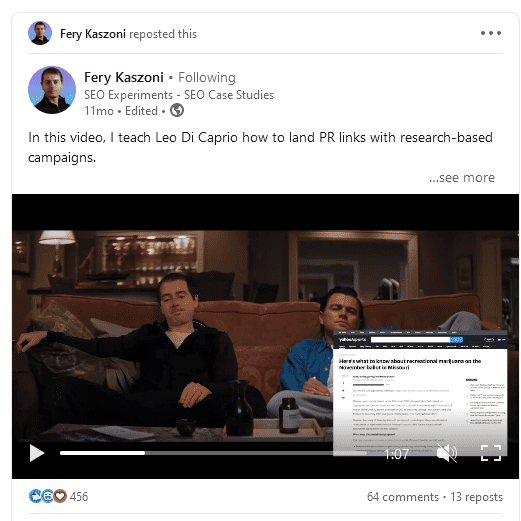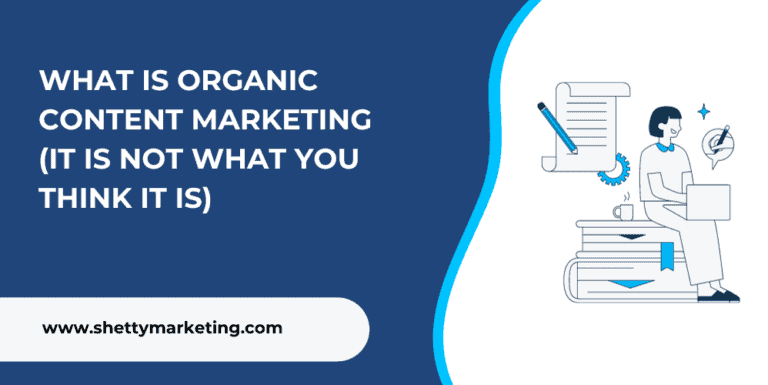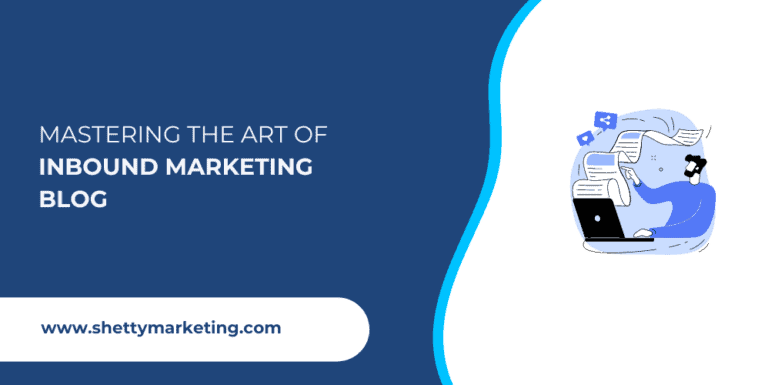Most businesses think organic content marketing is all about sharing information about their products and services.
But it’s more than that
Organic content marketing is a strategy that focuses on providing valuable and relevant content to a specific audience through search engine and social media channels
It goes beyond traditional advertising and instead aims to attract and retain potential customers organically.
The content can be informative, entertaining, or educational. As long as it resonates with your target audience, you’ll be able to drive profitable customer actions.
But how to go about creating organic content?
Let me explain.
[ez-toc]
How do you make organic content?
Creating organic content is no different than sharing your thoughts or information regarding the product or service you own on a public platform.
However, it is crucial that the organic content you create causes a snowball effect and aid in the expansion of your brand’s reach. Following are the five ways you can do that
Paint the picture (Vision drives decision)
Organic content marketing is about more than just creating blog posts and social media posts.
It is about painting the picture and driving decision-making processes in your target audience.
To accomplish this, it is important to create a vision that captures the attention and engages the emotions of your audience.
When you paint the picture for your audience, you are presenting them with a clear and compelling vision of what their life could be like if they were to use your product or service.
This vision helps them envision a brighter future and motivates them to take action.
Storytelling is a powerful technique that can be used to paint this picture. By telling stories that illustrate the benefits and value of your product or service, you can create a vivid and relatable narrative that resonates with your audience.
A great example of storytelling that adds a unique angle is the explainer video produced by DuPont.
Through the use of captivating visuals and illustrations, they provide a fresh perspective on complex topics, ensuring viewers stay engaged until the end.
Say something different (Add a unique angle to it)
In the realm of organic content marketing, it’s important to stand out from the crowd and captivate your target audience. One way to achieve this is by adding a unique angle to your content.
By infusing your own personal experiences, or offering a fresh perspective on a popular topic, you can create content that is truly one-of-a-kind.
Let’s say you’re a food blogger looking to spice up your blog posts.
Instead of simply sharing recipes, you could add a unique twist by incorporating personal stories about your culinary adventures or offering unconventional cooking tips.
This not only adds a personal touch but also gives your readers something different to engage with.
Adding a unique angle to your organic content has several benefits. Firstly, it sets you apart from your competitors who may be producing similar content.
This differentiation can help you attract and retain a loyal audience. Additionally, unique content is more likely to be shared on social media platforms, increasing your visibility and organic reach.
So, whether you’re writing blog posts, creating social media content, or optimizing your website for search engines, remember to inject a unique angle into your organic content strategy. It’s the key to captivating your target audience and achieving success in your content marketing efforts.
Make it easy to consume
To make organic content easy to consume for your target audience, it is essential to utilize different formats that align with the specific platform you are using.
This can include photos, quote images, memes, illustrations, short videos, and stories, among others. By diversifying your content formats, you can cater to different preferences and capture the attention of your audience effectively.
Experimenting with different content types also helps in keeping your audience engaged and providing variety. By incorporating a mix of informative, educational, entertaining, and interactive content, you can create a well-rounded organic content strategy that appeals to your potential customers.
For instance, using visually appealing photos or quote images can quickly convey your message or capture attention as users scroll through their social media feeds.
Memes and short videos are perfect for conveying humor and entertainment, while illustrations provide a creative and artistic touch to your content.
Remember to adapt your content format based on the platform you are using. For example, Instagram and Pinterest may be more visual-focused, while Twitter and LinkedIn may prioritize concise text-based content.
In conclusion, by incorporating various content formats such as photos, quote images, memes, and illustrations, you can make your organic content easily consumable for your target audience and increase engagement on social media platforms.
Speak to their paint points
In organic content marketing, it is crucial to speak directly to the pain points of your target audience. By empathizing with their challenges and frustrations, you can better understand the problems they are facing and craft your content to provide solutions and valuable insights.
Addressing pain points in your organic content marketing strategy is important for several reasons. Firstly, it allows you to establish yourself as a trusted resource in your industry. When potential customers see that you understand their challenges and can offer viable solutions, they are more likely to view you as an authority and turn to you for guidance.
Moreover, addressing pain points helps you build a stronger connection with your audience. When you are able to empathize with their struggles, they will feel understood and valued. This fosters loyalty and encourages them to engage with your content regularly.
Not only does addressing pain points benefit your audience, but it also benefits your business. By providing solutions to their challenges, you are positioning yourself as a problem-solver, which can lead to increased conversion rates and customer retention.
In conclusion, understanding and addressing the pain points of your target audience is an essential aspect of a successful organic content marketing strategy. By empathizing with their challenges and providing valuable solutions, you can build trust, deepen connections, and drive positive outcomes for both your audience and your business.
What is an example of organic content?
One great example of organic content is the social media posts by Fery Kaszoni. Fery’s posts are distinct and captivating, often showcasing his PR campaign strategies with creative pop-culture references.

By adding a unique angle and making his content stand out, Fery successfully grabs the attention of his audience.
In one of his posts, Fery uses a movie scene to talk about his research-based campaigns. This example perfectly illustrates the importance of creativity in organic content. By marrying his expertise with entertainment value, Fery’s content not only educates but also entertains his audience.
What is the benefit of organic content?
The benefit of organic content marketing lies in its ability to build a strong community and tribe following.
Unlike paid ads or promotions, organic content focuses on creating meaningful connections with consumers. It is about providing value, educating, entertaining, and engaging with the target audience.
The key advantage of organic content is its ability to reach consumers in a natural, non-intrusive way. By optimizing content for search engines and utilizing social media platforms, businesses can attract organic traffic and potential customers. Through blog posts, social media posts, and guest posts, businesses can establish themselves as thought leaders and experts in their industry.
Organic content is highly valuable as it has a longer lifespan and can continue to generate leads and traffic even months or years after its creation.
Related: How much business is driven by organic traffic
It can be in the form of evergreen content, user-generated content, or even email newsletters. When done right, organic content can drive conversion rates, build an engaged community, and establish a loyal customer base.
What is the difference between organic content and paid content
In content marketing, there are two main approaches: organic and paid.
Understanding the difference between these two strategies is essential for creating an effective content marketing plan.
Paid content marketing involves investing resources to promote your content, whereas organic content marketing focuses on gaining traction through natural, non-paid methods.
Content syndication is an effective strategy for paid content marketing, allowing you to distribute your content across multiple platforms, including paid press releases and guest posting on influential websites.
When it comes to content syndication, Industry Dive is considered one of the best examples. Whether you own a marketing agency or an ICM company, Industry Dive provides a platform to promote your content to your target market.
For marketing agencies, you can utilize Marketing Dive to effectively reach businesses. Likewise, if you’re in the incentive compensation management (ICM) industry, HR Dive is a great avenue to showcase your content to HR managers. Industry Dive offers a reliable and efficient solution for content syndication needs.
These methods typically require a financial investment to reach a wider audience and increase brand visibility.
However, when it comes to organic content marketing, one popular approach is utilizing Help a Reporter Out (HARO), a platform that connects journalists with sources for their stories.
By providing valuable insights and expertise, you can earn media coverage and backlinks without paying for placement.
Another effective way to boost organic content is through creative engagement on social media channels like Twitter and LinkedIn.
By creating compelling and shareable content, you can attract attention, gain followers, and expand your reach organically without relying on paid promotions.
In summary, the key difference between organic and paid content marketing lies in the methods used to promote your content.
While paid strategies require a financial investment, organic approaches rely on creativity, strategic partnerships, and social media engagement to gain traction naturally.





